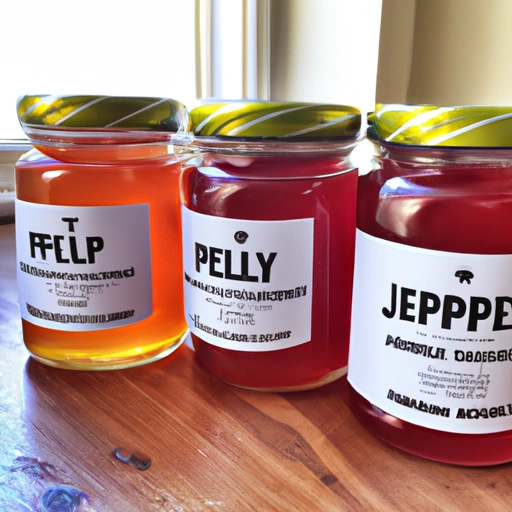Pepper Jelly
Description

Pepper jelly is a sweet and spicy spread made from a combination of peppers, sugar, vinegar, and pectin. Often found in a variety of colors and flavors, it typically holds a balance between sweetness from the sugar and a spicy kick from the inclusion of chilli peppers. The texture is similar to that of a traditional fruit jelly but can sometimes include bits of pepper for added flavor and aesthetic appeal. Its unique flavor profile makes it a versatile ingredient that can enhance many dishes.
Common uses
Pepper jelly is commonly used as a glaze, spread, or a dip. It pairs well with creamy cheeses and is often served as part of a cheese platter. Additionally, it can be used to add a sweet and spicy flavor to meats, sandwiches, and even cocktails or salad dressings.
Nutritional value
Calories
Typically, one tablespoon (about 20 grams) of pepper jelly contains approximately 50 calories.
Protein
Pepper jelly contains minimal protein, with less than 0.1 grams per tablespoon.
Fat
This condiment is generally low in fat, with less than 0.1 grams per tablespoon.
Carbohydrates
The primary macronutrient in pepper jelly is carbohydrates, with about 13 grams per tablespoon, most of which come from sugars.
Vitamins
While not a significant source of vitamins, pepper jelly may contain trace amounts of vitamin C and A, depending on the types of peppers used.
Minerals
Pepper jelly may provide small amounts of minerals like potassium and magnesium.
Health benefits
While pepper jelly is not typically consumed for its health benefits, the capsaicin found in hot peppers has been studied for its potential anti-inflammatory properties and metabolism-boosting effects. However, these effects would be marginal given the small amounts typically consumed.
Potential risks
The high sugar content in pepper jelly can contribute to increased calorie intake, and excessive consumption may lead to health issues associated with high sugar diets, such as diabetes or dental problems. Those with capsaicin sensitivity or gastrointestinal issues should also consume pepper jelly in moderation.
Common recipes
Pepper jelly is used in recipes such as pepper jelly glazed chicken, pepper jelly vinaigrettes, and as a topping on crackers with cream cheese.
Cooking methods
While often used directly from the jar, pepper jelly can be warmed to create a glaze or incorporated into sauces and marinades.
Pairing with other ingredients
It pairs exceptionally well with mild cheeses, pork, chicken, and seafood. It also complements the flavors of various breads, pastries, and even some desserts.
Summary
Pepper jelly is a dynamic ingredient with a rich Southern American heritage that has been embraced by diverse culinary traditions. Its blend of sweetness and heat contributes to a broad array of recipes, from appetizers to main dishes. While its health benefits are limited, it remains a beloved condiment for its unique taste and versatility.